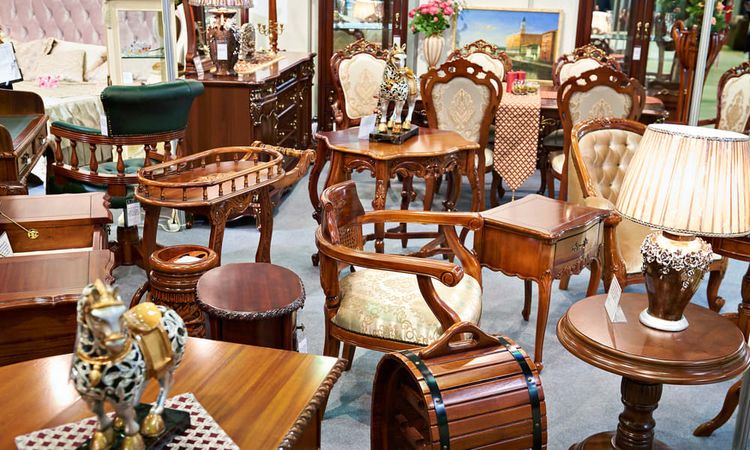Thrift Store Treasures: Tips for Finding Unique Secondhand Items for Your Home and Garden
Thrift stores have evolved from simple charity shops to treasure troves of unique finds and sustainable shopping options. As more consumers embrace eco-friendly practices and seek individuality in their home decor, thrifting has shed its stigma to become a mainstream activity. Whether you're furnishing a new home, seeking vintage garden tools, or hunting for one-of-a-kind decorative pieces, thrift stores offer endless possibilities at a fraction of retail prices.

What’s The Story Behind Thrift Shops?
The concept of thrift shops dates back to the early 20th century when charitable organizations began selling donated goods to fund their missions. The Salvation Army and Goodwill were among the pioneers, opening stores to provide employment training and community support. During the Great Depression, these stores became essential resources for families struggling to afford necessities.
In the post-war years, thrift shops continued to evolve, but it wasn’t until the 1990s that “thrifting” began gaining cultural cachet. The grunge movement embraced secondhand clothing, while environmentalists recognized the sustainability benefits of reusing goods. Today, thrift stores represent a multi-billion dollar industry that spans from small local charity shops to large commercial operations, all built on the foundation of giving items a second life.
The modern thrift store movement aligns perfectly with increasing consumer awareness about fast fashion, excessive consumption, and environmental impact. What began as a necessity has transformed into a conscious lifestyle choice, with many shoppers preferring the thrill of the hunt and the uniqueness of preloved items.
What Kind of Thrift Shops Are There?
The thrift store landscape is surprisingly diverse, with different models serving various purposes and communities:
-
Charity Thrift Stores: Organizations like Goodwill, The Salvation Army, and Habitat for Humanity ReStores operate shops where proceeds support specific social missions. These stores typically offer a wide range of items from clothing to furniture at lower price points, with inventory coming entirely from donations.
-
Consignment Shops: Unlike traditional thrift stores, consignment shops sell items on behalf of owners who receive a percentage of the sale. These stores tend to be more selective, often featuring higher-end brands and better-quality merchandise at mid-range prices.
-
Vintage and Antique Shops: Specializing in items of a certain age or era, these stores curate collections of genuine vintage pieces. Though technically not always “thrift” shops, they share the secondhand ethos while focusing on items with historical or collectible value.
-
Online Thrift Platforms: Digital marketplaces like ThredUP, Poshmark, and Facebook Marketplace have modernized thrifting by connecting buyers and sellers directly. These platforms often offer more convenient searching capabilities but lack the tactile discovery experience of physical stores.
-
Specialty Thrift Stores: Some thrift shops specialize in specific categories like books, furniture, building materials, or garden supplies. For home and garden enthusiasts, these specialized stores can be goldmines for finding unique items without sorting through unrelated merchandise.
5 Tips To Finding Unique Items in Thrift Shops
The art of successful thrifting requires strategy, patience, and a trained eye. Here are five proven techniques to uncover those hidden gems:
-
Shop with Frequency and Patience: Inventory turns over rapidly in most thrift stores, with new items appearing daily. Establish a regular visiting schedule for your favorite locations—some enthusiasts visit weekly or even daily. The most dedicated thrifters know which days their local stores restock and plan accordingly. Remember that successful thrifting rarely happens on a single visit; persistence is key.
-
Look Beyond the Surface: Many valuable items are overlooked because they need minor repairs or cleaning. That dusty brass lamp might shine beautifully after polishing, and wooden furniture with minor scratches can be transformed with simple refinishing. Bring along a measuring tape, consider the potential of each piece, and don’t be deterred by items that need a little TLC.
-
Know Your Neighborhoods: Thrift stores in affluent areas often receive higher-quality donations, while those in diverse neighborhoods might offer more unique cultural items. Expand your thrifting circuit beyond your immediate vicinity, and you’ll discover different types of merchandise. Some suburban stores may have better furniture selections, while urban locations might excel in decor and accessories.
-
Research Before You Shop: For specialty items like vintage garden tools or mid-century furniture, educate yourself about identifying marks, quality indicators, and fair market values. Knowledge helps you recognize valuable pieces instantly—crucial in environments where hesitation might mean missing out. Follow thrifting social media accounts for inspiration and identification tips.
-
Build Relationships with Staff: Friendly conversations with thrift store employees can yield invaluable benefits. Staff members often know when certain items will be put out and may even set aside pieces matching your interests. They can also provide insights about discount days, special sales, and the best times to shop for specific categories of merchandise.
Pricing Guide for Thrift Store Shopping
Understanding typical price ranges helps set realistic expectations and identify genuine bargains when shopping at different types of secondhand stores.
| Store Type | Furniture | Decor Items | Garden Tools | Price Compared to Retail |
|---|---|---|---|---|
| Charity Thrift Stores | $15-$150 | $1-$25 | $3-$30 | 10-30% of retail |
| Consignment Shops | $50-$500 | $10-$100 | $5-$50 | 30-60% of retail |
| Vintage/Antique Shops | $75-$1,000+ | $15-$200 | $10-$100 | Variable (often higher for collectibles) |
| Online Marketplaces | $25-$300 | $5-$50 | $5-$40 | 20-50% of retail |
| Estate Sales | $20-$500 | $5-$100 | $5-$75 | 25-40% of retail |
Prices, rates, or cost estimates mentioned in this article are based on the latest available information but may change over time. Independent research is advised before making financial decisions.
Transforming Thrift Store Finds into Home and Garden Treasures
The true magic of thrifting happens after purchase, when ordinary secondhand items transform into personalized treasures. For garden items, simple rust removal and tool reconditioning can revive vintage implements that often surpass the quality of modern equivalents. Indoor furniture might benefit from reupholstering, painting, or hardware updates to align with your aesthetic.
Consider the creative potential of repurposing: antique dressers can become bathroom vanities, vintage ladders transform into plant stands, and old windows make unique garden trellises. The sustainability aspect of this approach extends beyond the initial purchase—by restoring and repurposing items, you’re further extending their useful life while creating something uniquely yours.
The most successful thrift decorators develop a recognizable personal style while remaining open to serendipitous discoveries. They mix periods and styles confidently, understanding that the story behind each piece adds character that mass-produced items simply cannot match. With patience and vision, a collection of thrift store finds can create a home and garden with more personality and sustainability than any catalog-ordered interior.




